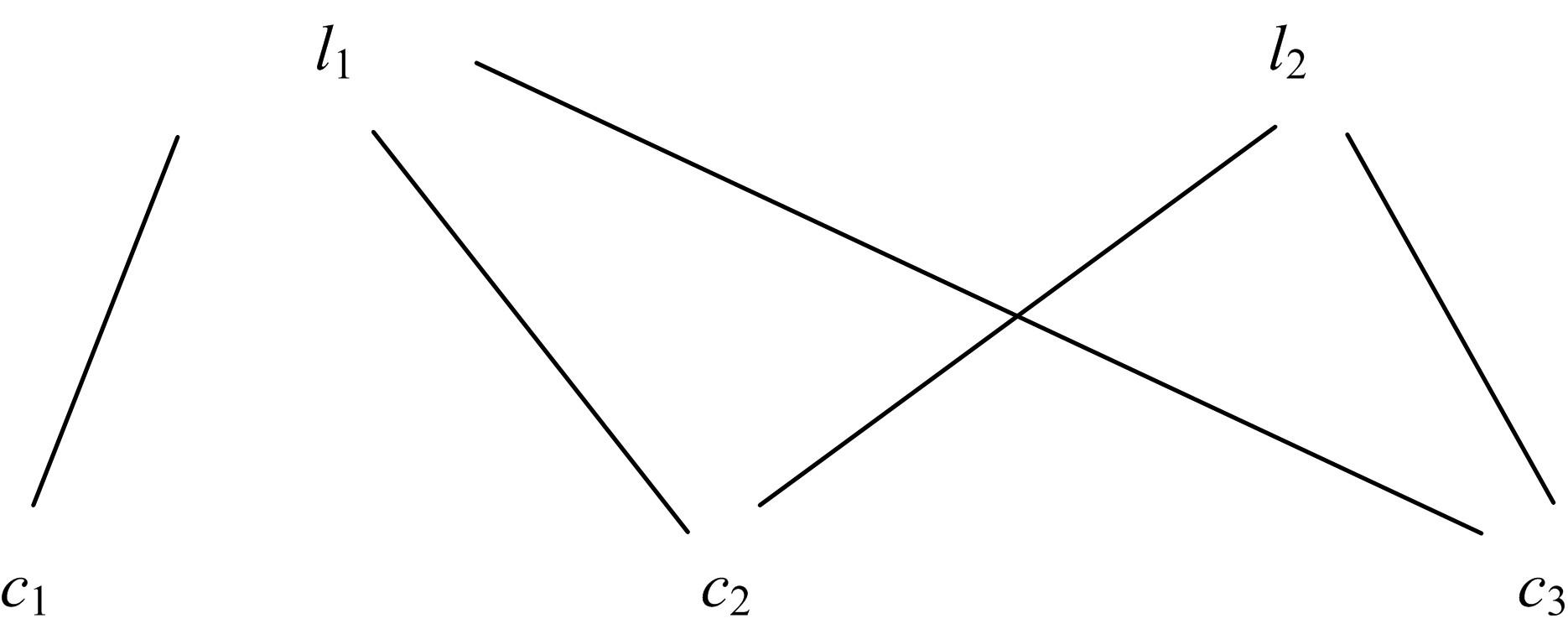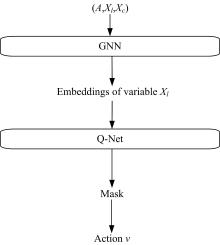Journal of Jilin University(Engineering and Technology Edition) ›› 2021, Vol. 51 ›› Issue (4): 1420-1426.doi: 10.13229/j.cnki.jdxbgxb20200515
Stochastic local search heuristic method based on deep reinforcement learning
- 1.College of Computer Science and Technology,Jilin University,Changchun 130012,China
2.College of Software,Jilin University,Changchun 130012,China
CLC Number:
- TP181
| 1 | Cook S A. The complexity of theorem-proving procedures[C]∥Proceedings of the 3rd Annual ACM Symposium on Theory of Computing, New Orleans, USA, 1971: 151-158. |
| 2 | Audemard G, Simon L. Predicting learnt clauses quality in modern SAT solvers[C]∥International Joint Conference on Artificial Intelligence, Hainan Island, China, 2009: 399-404. |
| 3 | Moskewicz M W, Madigan C F, Zhao Y, et al. Chaff: Engineering an efficient SAT solver [C]∥Proceedings of the 38th Annual Design Automation Conference, Las Vegas, USA, 2001: 530-535. |
| 4 | Eén N, Sörensson N. An extensible SAT-solver[C]∥International Conference on Theory and Applications of Satisfiability Testing, Santa Margherita Ligure, Italy,2003: 502-518. |
| 5 | Cai S, Su K. Local search for Boolean Satisfiability with configuration checking and subscore[J]. Artificial Intelligence, 2013, 204: 75-98. |
| 6 | Shang Y, Wah B W. A discrete Lagrangian-based global-search method for solving satisfiability problems[J]. Journal of Global Optimization, 1998, 12(1): 61-99. |
| 7 | Balint A, Schöning U. Choosing probability distributions for stochastic local search and the role of make versus break[C]∥International Conference on Theory and Applications of Satisfiability Testing, Trento, Italy, 2012: 16-29. |
| 8 | Wang F, Jiang M, Qian C, et al. Residual attention network for image classification[C]∥Proceedings of the IEEE Conference on Computer Vision and Pattern Recognition, Honolulu, USA,2017: 3156-3164. |
| 9 | Chiu C C, Sainath T N, Wu Y, et al. State-of-the-art speech recognition with sequence-to-sequence models[C]∥IEEE International Conference on Acoustics, Speech and Signal Processing (ICASSP), Calgary, Alberta, Canada, 2018: 4774-4778. |
| 10 | Vaswani A, Shazeer N, Parmar N, et al. Attention is all you need[C]∥Advances in Neural Information Processing Systems, Los Angeles,USA, 2017: 5998-6008. |
| 11 | Xu L, Hutter F, Hoos H H, et al. SATzilla: portfolio-based algorithm selection for SAT[J]. Journal of Artificial Intelligence Research, 2008, 32: 565-606. |
| 12 | Liang J H, Ganesh V, Poupart P, et al. Learning rate based branching heuristic for SAT solvers [C]∥International Conference on Theory and Applications of Satisfiability Testing, Bordeaux, France, 2016: 123-140. |
| 13 | Liang J H, VK H G, Poupart P, et al. An empirical study of branching heuristics through the lens of global learning rate[C]∥International Conference on Theory and Applications of Satisfiability Testing, Melbourne, Australia,2017: 119-135. |
| 14 | Selsam D, Lamm M, Bünz B, et al. Learning a SAT solver from single-bit supervision[C]∥The 7th International Conference on Learning Representations, San Diego, USA, 2019. |
| 15 | Sutton R S, Barto A G. Reinforcement Learning: an Introduction[M]. Boston:MIT Press, 2018: 68-69. |
| 16 | Mnih V, Kavukcuoglu K, Silver D, et al. Human-level control through deep reinforcement learning[J]. Nature, 2015, 518(7540): 529-533. |
| 17 | Mezard M, Zecchina R. Random k-satisifability problem: from an analytic solution to an efficient algorithm[J]. Physical Review E, 2002, 66 (5) :056126. |
| [1] | Ya-hui ZHAO,Fei-yang YANG,Zhen-guo ZHANG,Rong-yi CUI. Korean text structure discovery based on reinforcement learning and attention mechanism [J]. Journal of Jilin University(Engineering and Technology Edition), 2021, 51(4): 1387-1395. |
| [2] | Xiao-hui WEI,Bing-yi SUN,Jia-xu CUI. Recommending activity to users via deep graph neural network [J]. Journal of Jilin University(Engineering and Technology Edition), 2021, 51(1): 278-284. |
| [3] | Man YUAN,Chao HU,Ting-ting QIU. A new method for data integrity assessment based on Linked data [J]. Journal of Jilin University(Engineering and Technology Edition), 2020, 50(5): 1826-1831. |
| [4] | Lei LIU,Jie WENG,De-gui GUO. Static input determination method in partial evaluation for compiler test [J]. Journal of Jilin University(Engineering and Technology Edition), 2020, 50(1): 262-267. |
| [5] | Shun YANG,Yuan⁃de JIANG,Jian WU,Hai⁃zhen LIU. Autonomous driving policy learning based on deep reinforcement learning and multi⁃type sensor data [J]. Journal of Jilin University(Engineering and Technology Edition), 2019, 49(4): 1026-1033. |
| [6] | MA Jian, FAN Jian-ping, LIU Feng, LI Hong-hui. The evolution model of objective-oriented software system [J]. 吉林大学学报(工学版), 2018, 48(2): 545-550. |
| [7] | LUO Yang-xia, GUO Ye. Software recognition based on features of data dependency [J]. 吉林大学学报(工学版), 2017, 47(6): 1894-1902. |
| [8] | YING Huan, WANG Dong-hui, WU Cheng-gang, WANG Zhe, TANG Bo-wen, LI Jian-jun. Efficient deterministic replay technique on commodity system environment [J]. 吉林大学学报(工学版), 2017, 47(1): 208-217. |
| [9] | LI Yong, HUANG Zhi-qiu, WANG Yong, FANG Bing-wu. New approach of cross-project defect prediction based on multi-source data [J]. 吉林大学学报(工学版), 2016, 46(6): 2034-2041. |
| [10] | WANG Nian-bin, ZHU Guan-wen, ZHOU Lian-ke, WANG Hong-wei. Novel dataspace index for efficient processing of path query [J]. 吉林大学学报(工学版), 2016, 46(3): 911-916. |
| [11] | CHEN Peng-fei, TIAN Di, YANG Guang. Design and implementation of LIBS software based on MVC architecture [J]. 吉林大学学报(工学版), 2016, 46(1): 242-245. |
| [12] | TE Ri-gen, JIANG Sheng, LI Xiong-fei, LI Jun. Document compression scheme based on integer data [J]. 吉林大学学报(工学版), 2016, 46(1): 228-234. |
| [13] | FENG Xiao-ning, WANG Zhuo, ZHANG Xu. Formal method for routing protocol of WSN based on L-π calculus [J]. 吉林大学学报(工学版), 2015, 45(5): 1565-1571. |
| [14] | LIU Lei, WANG Yan-yan, SHEN Chun, LI Yu-xiang, LIU Lei. Performance portable GPU parallel optimization technique on Bellman-Ford algorithm [J]. 吉林大学学报(工学版), 2015, 45(5): 1559-1564. |
| [15] | LI Ming-zhe, WANG Jin-lin, CHEN Xiao, CHEN Jun. Architecture model of streaming media applications on network processors(VPL) [J]. 吉林大学学报(工学版), 2015, 45(5): 1572-1580. |
|
||




